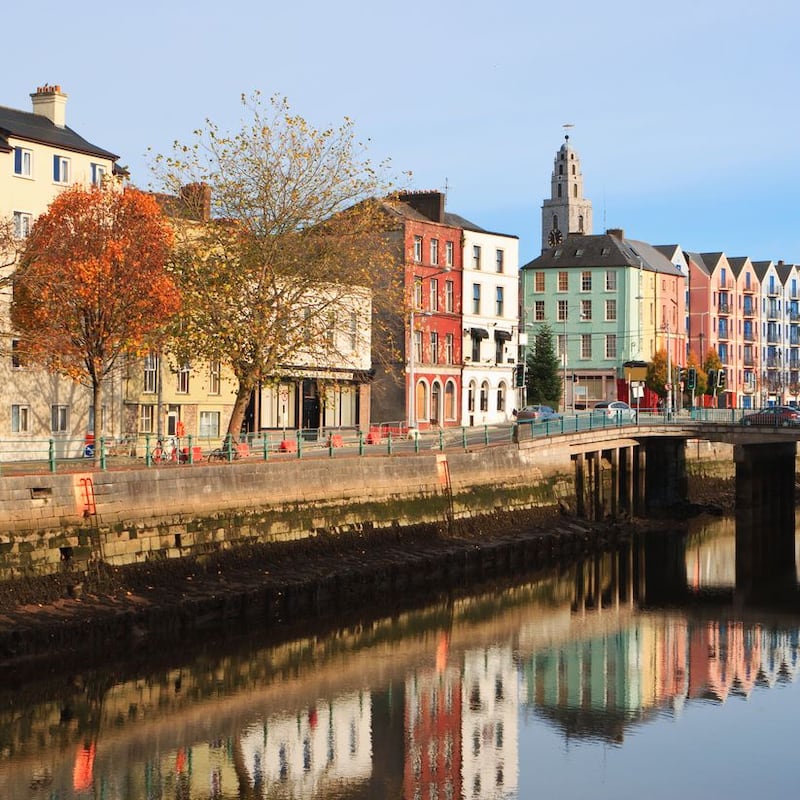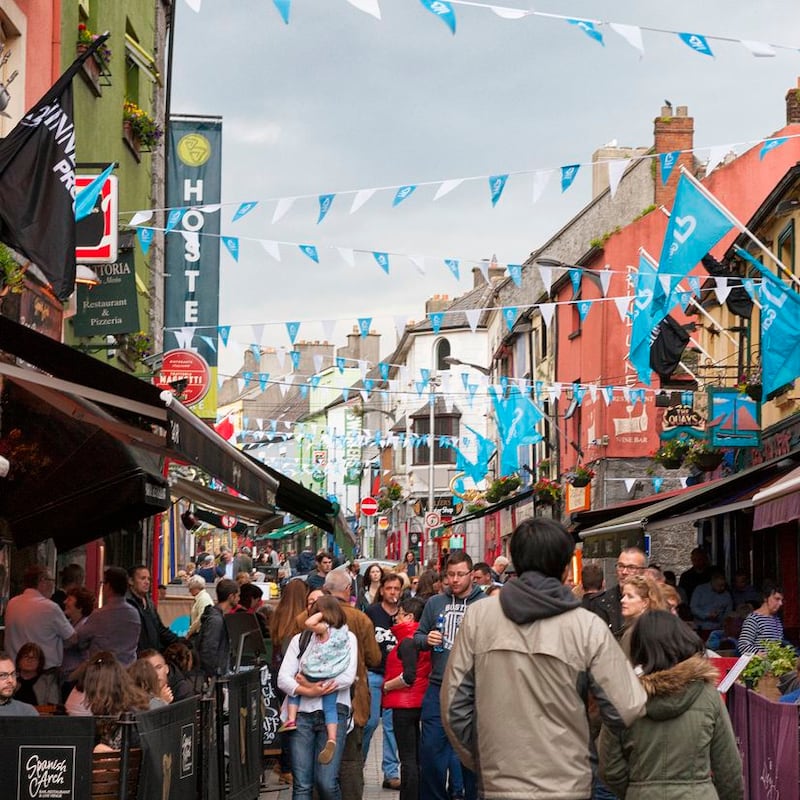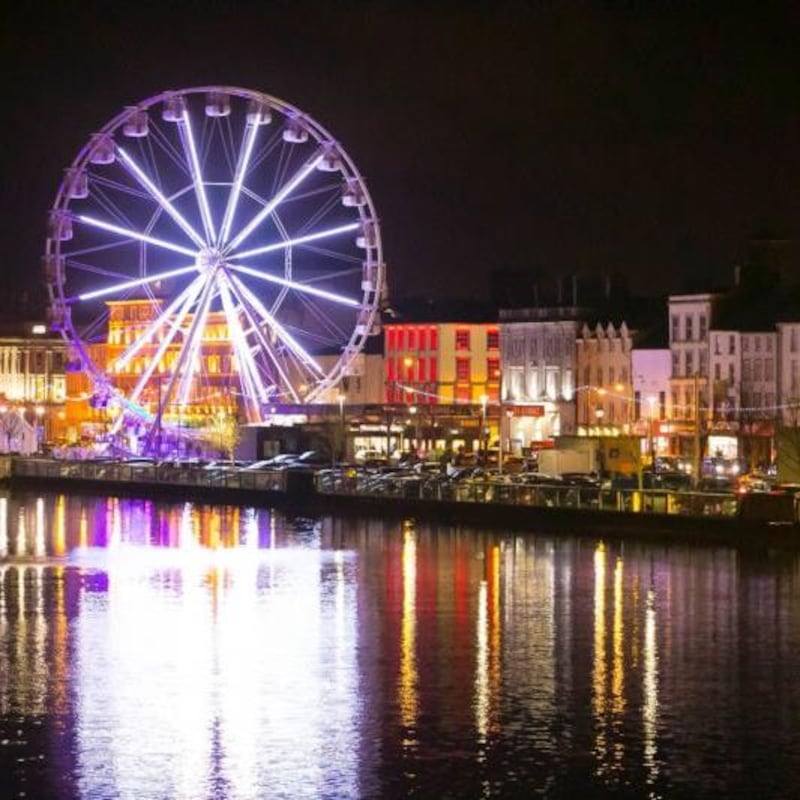“Fifteen-minute cities” have access to education, amenities and green spaces just minutes away by walking or cycling. The need of a car is greatly diminished in these urban areas which are a growing reality across Europe.
Despite a legacy of poor planning and stagnation, Irish cities have an opportunity to return to their “15-minute” roots. Is it outlandish to think Dublin could soon become more like Copenhagen, and Cork might assume the qualities of Oslo? In spite of decades of poor planning, such possibilities in the form of lived-in vibrant cities with ease of movement and ready access to amenities are realisable, a recent report has found.
The Close to Home report by Hassell, the international architecture, design and urban planning practice, details how the concept could be rolled out in Ireland but, significantly, also captures current public attitudes embracing a contrasting mix of strong support for reimagining urbanscapes and tangible concern about anything suggesting increasing density.
The State’s priority now is towards a more sustainable compact urban form, placing cities as drivers of Ireland’s future. The core action complementing this is creating more compact, walkable neighbourhoods of more than 5,000 people/sq km.
With an urban population of more than 50,000, Waterford could be a small and thriving compact city with both the city and nature in close reach
Galway is least dense with 5 per cent of people in places with more than 5,000 persons/sq km; Dublin is at 39 per cent, ie the proportion living in areas meeting minimum density requirements to support amenity richness and walkability – considerably lower than trailblazing cities.
All five Irish cities are strategically located close to key natural amenities such as rivers and coasts, though their potential as “blue and green infrastructure” is largely untapped.
Contrary to what might be expected, Prof Niamh Moore Cherry, a specialist in geographical inequalities, suggests it might be easier to develop the 15-minute concept initially in one of our smaller cities, such as Waterford, because of “its built form at the moment”, including its quays and sites suitable for development. This would then become “the template model where people see the benefits”.
The Hassell report provides detailed assessments of each city. In summary:

Dublin
The capital's extensive footprint is a product of 20th-century suburbanisation, developed hand-in-hand with the car-dependence of residents. For decades, new neighbourhoods have been built from scratch on the city's constantly expanding fringes, making poor use of greenfield land and often lacking services and infrastructure.
Since the 1990s Dublin has attempted to develop a more compact urban form again, with the Docklands and Smithfield demonstrating potential for intensification and city centre repopulation.
Quality and affordability of homes in the city centre is lacking, making it virtually impossible for many to choose a more sustainable, compact, high-quality city lifestyle.
The city centre is a perfectly walkable 15-minute neighbourhood, with characterful streets and a variety of community amenities. “Younger people are much more likely to choose city and car-free living in future, and these new residents (and workers) will help moves in a more sustainable direction."

Cork
By building new compact places on central former industrial sites, "the city is helping to catalyse a full urban revival" and is well suited to becoming a 15-minute neighbourhood.
But there’s “a lot of empty and vacant urban fabric”, adversely impacting the pedestrian experience and fuelling car-dependency. Public transport infrastructure is under-developed in relation to scale of ambition for population growth. The city has a strong appetite for urban development, but struggles to attract investment.
There is significant opportunity to densify parts of the city centre, notably the south docklands if appropriate infrastructure is put in place.
Cork’s location on the river Lee and close to the sea is a great natural amenity that should be integrated with urban living.

Galway
Galway has developed around a characterful, walkable, historic centre with strong connections to the sea and river. It must reduce through-traffic and increase the city centre's residential population.
One in three people cannot walk to a supermarket within 15 minutes. With no recently built examples to showcase benefits of compact urban living, new neighbourhoods may struggle to surpass existing negative perceptions.
Galway’s coastal location makes it vulnerable to climate disruption and flooding. “A combined green/blue strategy will help to both enhance the city’s public realm and make the city more resilient for the future.”
Its city centre is a natural 15-minute neighbourhood, “with easy access to culture and nature, and distinctive, human-scale streets”. With strong population growth by 2040, it will have a much-needed population base for building new sustainable mixed use high-quality neighbourhoods.

Limerick
The city centre is relatively compact with good key amenities, which would benefit from development of old industrial sites – making it a more enjoyable and sustainable as place to live and visit.
The historic city centre was once a thriving 15-minute city, now struggling to recover from a century of suburban, car-centric development. “Public transport and walking/cycling amenities are lacking in quality and scope.”
Given its recent history of regeneration, high levels of public sector expertise exist for driving development and working collaboratively. Opportunities exist for creation of new exemplar 15-minute communities in areas such as Colbert Station Quarter, providing affordable housing and short commuting times.

Waterford
With an urban population of more than 50,000, Waterford could be a small and thriving compact city with both the city and nature in close reach. Greatest potential exists by the river front. The city is almost exclusively located south of the river Suir but struggles with high car-dependency, creating challenges for reclamation of public space for public activities.
Waterford North Quays has strategic development zone status, streamlining the planning process and providing a clear framework for sustainable development. Significant brownfield land ripe for development lies close to the centre; which could be used to increase residential population and amenity provision.










